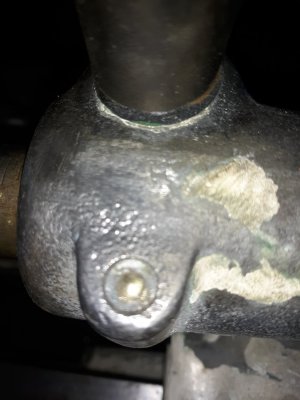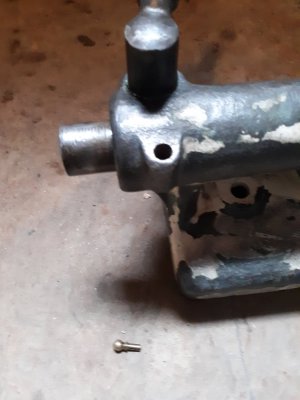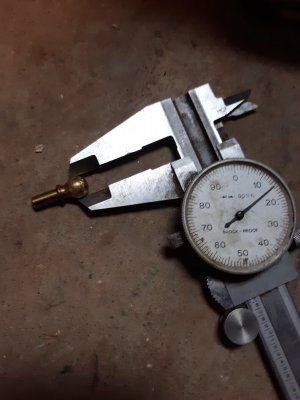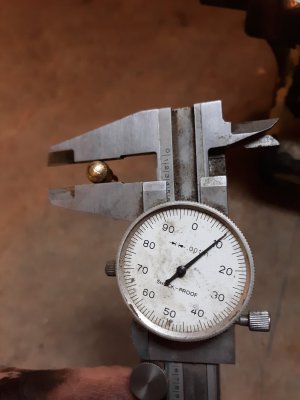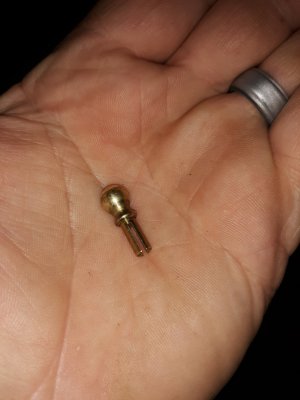Well, I had a whole lot written in here, but then the page decided to refresh and I lost it all. Not sure I care enough to rewrite all my prose, so here's the gist:
* I ran the above test, running the carriage to the head and setting the carriage lock, then cranking it toward the tail until it gets tight. I made it a little more than halfway, then had to loosen it several times to get it to go the rest of the way, getting a half-crank or so for each 1/8th-turn I loosened the clamp. Wound up almost a full turn out from the halfway mark.
* I put an indicator mag base on the cross feed, with the zeroed indicator on the peak of the front way, and ran the carriage from tail to head. +0.018-0.022 on several runs. Also got +0.014 when compared to the tailstock flat way, and +0.009 when compared to the unmilled flat between the rear inverted vee ways.
* Tested the new used VFD, it will power up on split phase 240, so I can use the 3-phase motor.
* The motor ohms and megs good, but has a few cracked wires, so I pulled it and opened the case. Found metal shavings in the windings- Tubal Cain is right, compressed air BAD. Cleaned all that out in prep for rewiring the core. Never found shavings anywhere else in the machine.
* Ordered some 1-7/8"x8 nuts to make a faceplate/chuck, and an original toolpost and set of Armstrong cutting tool holders, along with some bits. Once I make a chuck, I can do a test bar.
* Learned about the original daubers these came with, so went looking for mine. Under the paint was a bronze blob- looked like someone brazed the hole shut? Dug more paint out, no, that's brass, maybe someone broke it off in the hole? Heated it up with a heat gun until it wiggled and turned a bit, then inverted the tailstock and tapped it with a rubber mallet. PING, out fell a dauber, but the head is 0.005" smaller than the original hole, so I don't know what this goes to.
* The original tumbler trigger was broken, and my attempt to solder it failed, so I cut a new one out of a scrap of stainless at work. Not as pretty, but works great.
Next up- rewire and reinstall the motor, wire up the VFD, and make a chuck and a test bar when the stuff gets here. Oh! Almost forgot- also got a new (er) 10R spindle and bearing caps to replace the scratched ones, I'll scrape the headstock a bit and polish it before installing them. Also have to get new felts.


